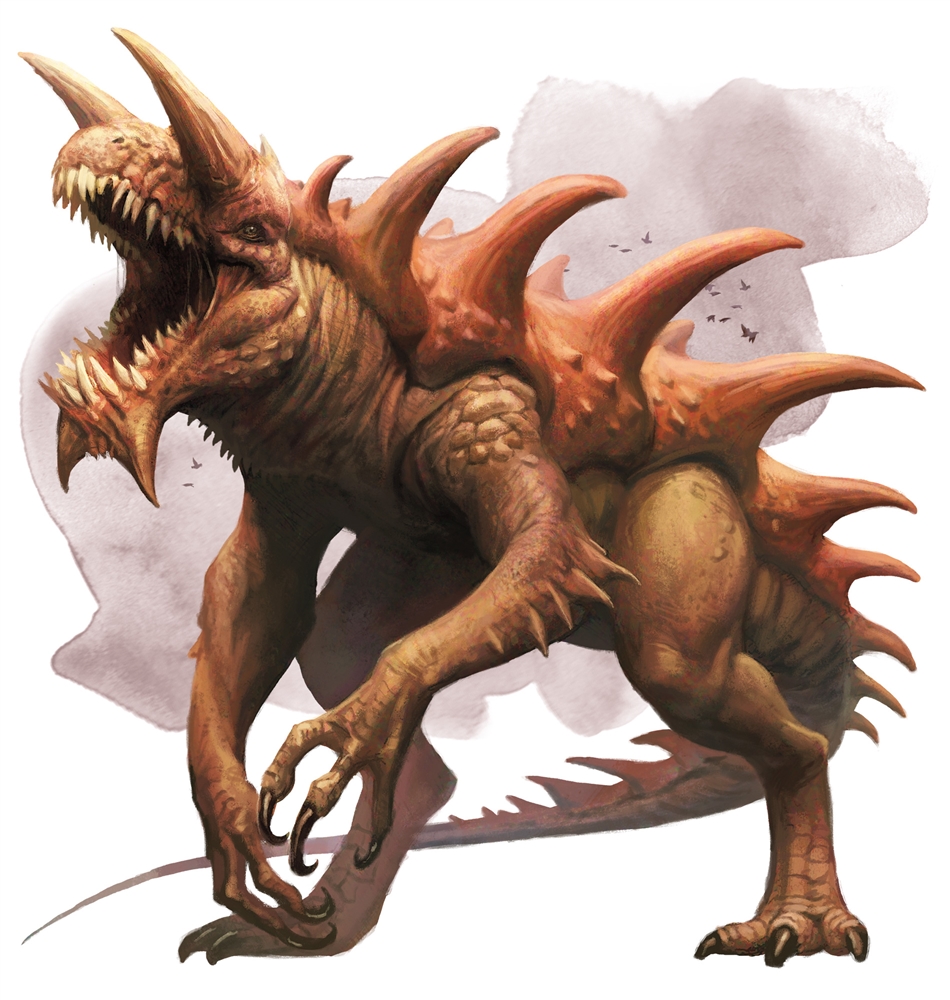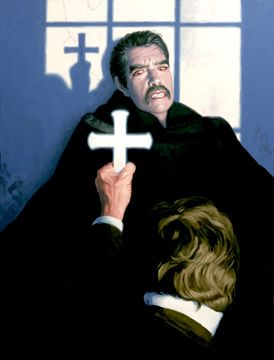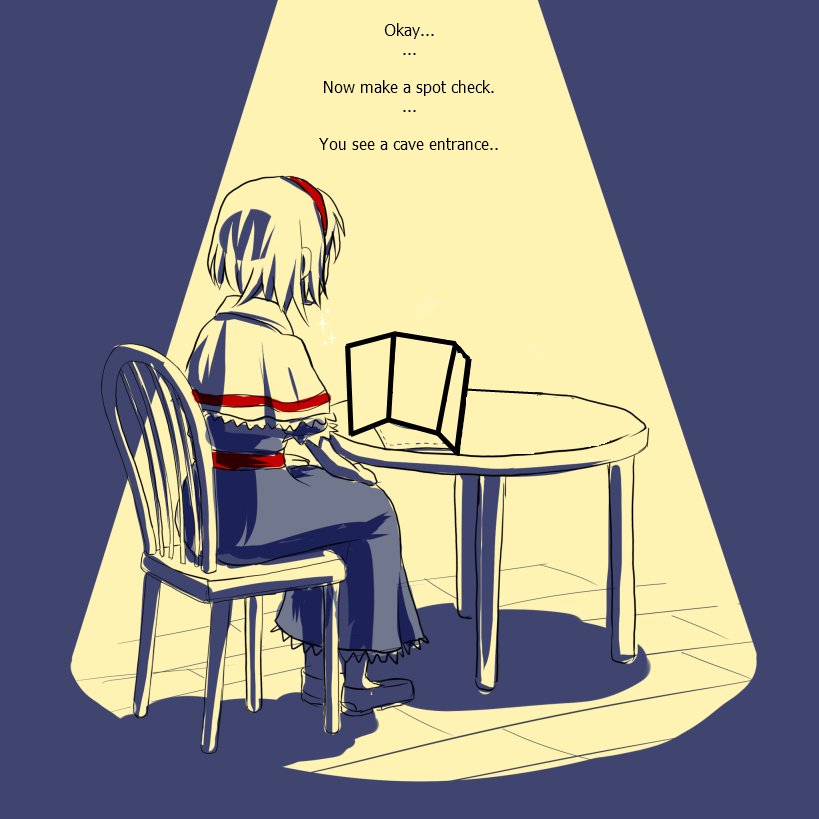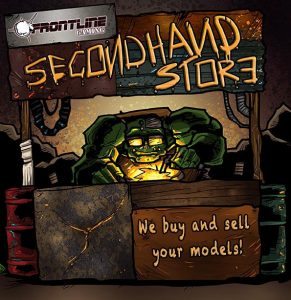Just in time for Halloween Thanksgiving, we’ve got some tips for including elements of horror in your game sessions. Because the true horror, is dealing with your family.
Horror films, TV shows, novels, and other media are perpetually a part of the public consciousness. Although their popularity does wax and wane, in any given decade there are always a significant number of new horror stories being created, and often good ones at that. Fear is one of the most fundamental human emotions, and bringing it to your tabletop game can be a challenge, but also very rewarding when done right. So let’s look at a few key rules that can help you include horror in your gaming sessions, whether it’s a full campaign or a one-off session that you want to have a spooky vibe.

Player Buy-In Is Key
This is the first and most adamant rule: you can’t scare someone if they don’t want to be scared. You should always get consent and cooperation from your players when gaming, of course, but it is extra critical when doing horror gaming for a number of reasons.
Most obviously, you don’t want the game to go anywhere your players aren’t comfortable with. It’s all cool and good for you to have a Lovecraftian menace you want to spring on people, but if someone is dealing with life issues of their own and just wants a relaxing session of Imaginary Elves, that encroachment can create tension in the gaming group. Make sure people understand what you want to do and what the limits are- something that is good in general but critical when you are pushing boundaries, as horror often does.
But even beyond that, you probably can’t scare someone if they aren’t willing. You and your friend are sitting around a table eating snacks and rolling dice; unlike a movie you don’t have the advantage of visual effects and unlike a book you probably can’t wholly immerse the players in the experience, as the physical stimuli around them will always limit you. So you’re relying heavily on not just the consent of the players, but their active desire to be scared- because otherwise, it’s very easy to laugh off your amateurish attempts and simply go back to eating Cheetos.

The Monster is Stronger
Almost all horror media revolve around a monster, though there are exceptions. The “monster” can be a literal monster, a supernatural force the protagonists are contending with, some sort of shadowy organization, or even the old saw about “the true monster is man.” I will refer to the monster at various times in this article, but understand that term is a placeholder for whatever enemy you are using to inspire terror in the players.
With that in mind, one of the most steadfast rules of horror is that the monster is vastly stronger than the protagonists- perhaps it is immune to normal weapons, or in a mundane setting it possesses supernatural powers. Whatever its nature, the monster has a nigh-insurmountable advantage over the heroes, and this is the crux of the horror- horror stems from a perceived powerlessness, and the monster’s superiority is where this comes from.
In a D&D game, however, you have to be careful with this- you can’t simply throw a monster that is ten levels higher than the party at them and expect to create horror, because inflated statistics are not in themselves scary. The monster should be above the party’s level, certainly, but you also want it to have abilities that fall outside the normal spectrum of what enemies can do, because it needs to be a threat and a presence in the game even when it is not physically in the scene.

The Monster Follows Rules
To counterbalance this, however, the monster also needs to have limitations- otherwise, it could just kill the heroes effortlessly at any time. Having a set of rules that the monster follows both explains why the protagonists are allowed to stay alive (the monster can’t kill them, because of Reasons) and also provides them a path to eventually defeating it, thus providing a satisfying conclusion to the story.
Think about the famous movie monsters and their weaknesses, but also what drives them. Dracula can’t go out in the sun, is repelled by crosses, and can’t enter a house uninvited, but beyond those things he also does not exist simply to slaughter people- he wants to seduce and turn his victims, drawing them away from their faith and virtues. The monster from It Follows is singleminded and unstoppable in its pursuit of targets, but has very strict limitations in how it can move and there is a loophole that can (temporarily) allow you to escape it. Virtually all movie monsters have a specific set of rules they follow that determine how and why they attack their victims- and if you are crafting a horror story of your own, you need to replicate this kind of mythology-building in your own game.
Since your monster is presumably supernatural, think about what drives it and what it needs in the context of your adventure. Is it trying to terrorize the characters and feed on their fear? Is it trying to cause them to question themselves? Is it trying to get them to join it? Figure out what the creature wants, as well as what it can or cannot do. This combination of supernatural potence with strict occult limitations form the baseline for how the players will interact with the creature most of the time. If the monster cannot enter hallowed ground, expect the players to be searching for churches or blessed sites; if the creature is only active one night of each week, that sets up the players for a series of events of rising tension as that night approaches and they attempt to make preparations to face it.

The Protagonists Are Alone
Another key component of horror is that the heroes are isolated- either literally or figuratively- from others. Horror, as we already mentioned, stems from powerlessness and nothing disempowers human beings like isolating them from society. Make it clear that not only are the characters less powerful than the monster they face, but also that they will receive no help from others- either because they are not believed, there is no one else around, or for other reasons.
The simplest way to do this is to have them literally be on their own, of course- abandoned castles, spooky forests and the like are prime horror territory for this very reason. But there also can be a lot of value to the feeling of being alone in a crowd- it can emphasize the separation of the party from “normal” people and make the weight of their duty to defeat the monster seem all the heavier if the lives of innocent and unknowing others are also at stake.
Of course, there is another way to make the players be alone- namely, to have everyone else around them be part of the conspiracy, a la Invasion of the Body Snatchers or They Live. In this sort of setup, not only are the players isolated in a crowd, but the presence of the crowd itself creates a kind of paranoia as the crowd becomes an extension of the monster. This is, perhaps, a somewhat different sort of fear than other techniques might evoke, but it can still be effective none the less.
If the party has access to supernatural means to call for aid (e.g. the Sending spell or the like), you may want to consider disabling it somehow. The crudest version of this is to simply have the spell not work for some kind of mystical reason, but if you are a bit more clever then you can achieve this without resort to such blunt-force methods; giving the party reasons to suspect their allies, or having costs to making such contact (“It could alert the monster!”), or similar tactics will often feel more realistic and less arbitrary.

Consequences Are Real
This is the hardest part of writing horror to square with D&D, unfortunately, because D&D characters are more than used to danger. The Hit Points system means that being stabbed, shot, roasted, drained, etc, is virtually meaningless to adventurers, and so you will have to go to extraordinary lengths to create any sense of fear and drama for them.
To that end, there are a number of routes you can go. It may benefit you to have the monster threaten the party in a way that doesn’t directly attack its hit points- for example, something that drains levels, eats magic items, or otherwise attacks their statistics in a way that is outside the normal realm of adventuring threats. This can be tricky to balance and have feel “real”, but if you are creating a unique monster from scratch there are a lot of options for how to go about this.
You may also wish to introduce rules for lasting injuries to your campaign, although this carries complications of its own. But some players may find the viscerality of such injuries much more thrilling (even in other contexts), and many such systems have been written for all editions of the game, so you certainly don’t lack for material to draw on.
Limiting the party’s ability to rest can also help here- loss of hit points by itself can be threatening enough if the players understand that recovering those hit points will not simply be a matter of declaring that they want to take a short rest. The key here, however, is understanding from your players- they need to know about this change and its consequences and how it will affect them or else it simply doesn’t work.
Whatever form you want your consequences to take, it is paramount to ensure that those consequences are lasting (rather than simply fading after a short period of time) and that they are threatening. Death is, of course, the most lasting and threatening of consequences (especially if the party doesn’t have access to resurrection magic), but it needn’t be the only one as long as you can get creative. You can attack the party in any number of ways, including via their friends and allies if you like, but make sure those attacks come as a response to failures on the PC’s part rather than simple arbitrary punishment.
Final Thoughts
Horror games can be great fun, either as a consistent weekly game or as a one-off experience, but they require a very different set of assumptions than your typical RPG experience because they are antithical to the usual power fantasy that many players expect from a game. But with a little work and the cooperation of your players, you can have a delightful evening of terror and struggle against the odds ahead of you as well as a unique story to tell for many years to come.
As always, remember that you can get your roleplaying supplies at great discounts every day from the Frontline Gaming store, whether you’re looking for a new supplement to add something to your character or a set of minis for your latest encounter.

